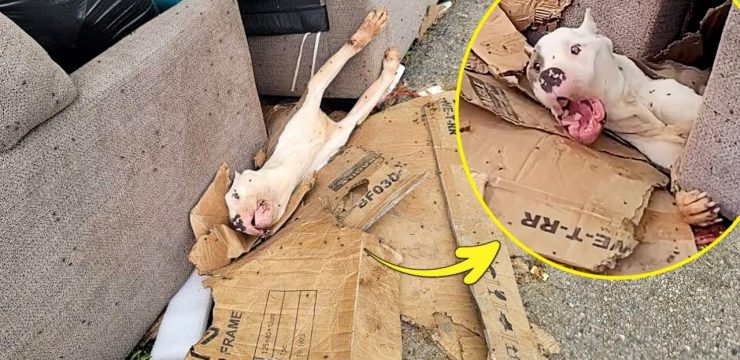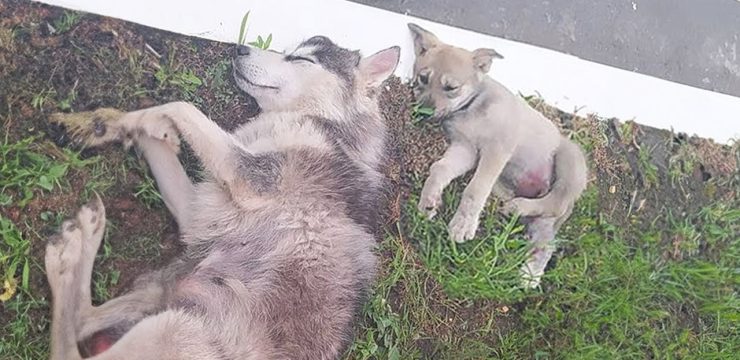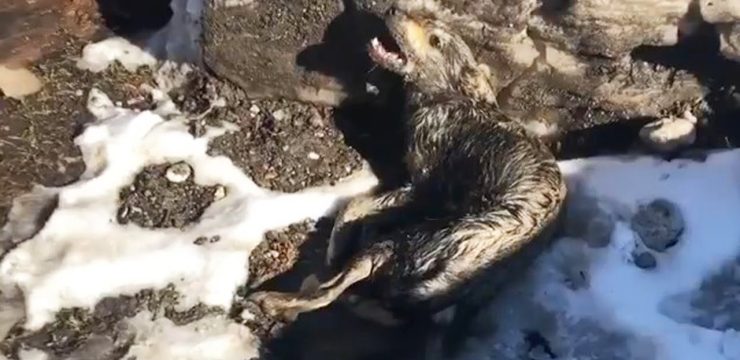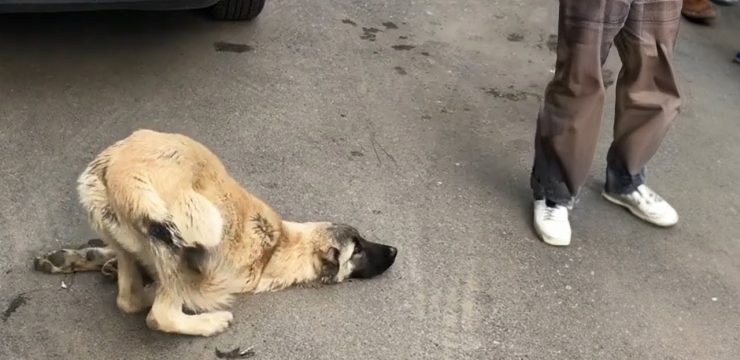Black bears are remarkable animals, known for their strength, intelligence, and presence in the wild. They are symbolic of nature’s raw beauty and resilience. That’s why it’s incredibly heartbreaking to see one suffering, especially when it’s a young bear struggling to survive without the care it desperately needs. In December 2024, the team at Gold Country Wildlife Rescue (GCWR), based in North Auburn, California, received a report that would mark one of the most devastating cases they had seen in a long time. The call came from El Dorado County, where someone had discovered a severely malnourished black bear cub wandering alone, showing visible signs of illness and distress. Though GCWR had handled many tough rescues before, this one immediately stood out.
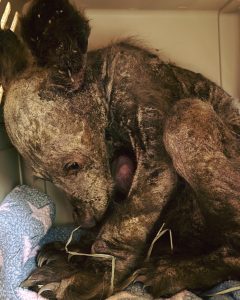
When the rescue team arrived, what they found left them shaken. The small black bear cub was in terrible condition. He was weak, extremely underweight, and suffering from dehydration, anemia, and a painful skin infection. His fur was missing in large patches, and he appeared fragile and broken. Curled up in his crate, the bear barely lifted his head, staring down at his disproportionately large paws. It was a sight that none of the experienced rescuers would forget anytime soon. “It was heartbreaking to see a bear cub in such terrible condition,” said Chelsea Engberg, the marketing and outreach manager at GCWR, in an interview with The Dodo.
Experts believe that the cub had likely been orphaned and left to fend for himself for far too long. Without the nourishment and protection that a mother bear provides, his body began to shut down. Malnutrition had set off a chain reaction that quickly deteriorated his overall health, leaving him clinging to life. But his story was far from over. The team at GCWR sprang into action, performing a full medical evaluation and crafting a detailed treatment plan tailored to his needs. He weighed only 20 pounds—far below the healthy weight for a bear his age. Everyone involved knew that his road to recovery would be long and challenging, but there was no hesitation. They were determined to give him a fighting chance.
The first few weeks of care were focused on stabilizing the cub’s condition. He was provided with fluids, medications, and specialized nutrition. Slowly, his body began to respond. One of the earliest signs of improvement came when tiny patches of fur began to grow back on his bare face. It might have seemed like a small victory, but for the team at GCWR, it was a beacon of hope. “While it might not seem like a big change, the fact that we are starting to see fur fuzz grow on his face is an exciting next step in his healing journey,” the organization shared in a Facebook update.
As the days turned into weeks, the young bear continued to improve. His energy levels started to increase, and his personality began to emerge. He grew curious about his surroundings and started engaging with enrichment toys placed in his enclosure. A small kiddie pool and a firehose hammock became his favorite spots to relax and play. Despite the growing bond between the team and the bear, the rescuers remained careful to limit human interaction. Their goal was to help him recover while keeping him as wild as possible, in hopes that he could one day return to his natural habitat.
By February 2025, the bear had undergone an astonishing transformation. His once fragile body was now covered in healthy fur, and his spirit had returned. He was active, alert, and looked nothing like the weak cub that had arrived just a couple of months earlier. “We are always amazed by the wild animals in our care, and this bear cub is one of the most amazing recoveries we have seen,” Engberg shared. While everyone celebrated his recovery, there was still one critical question left unanswered: Would he be able to return to the wild, or would he need a permanent sanctuary?
The California Department of Fish and Wildlife (CDFW) stepped in to assess the bear’s long-term prospects. Their evaluation would ultimately determine whether the cub was fit to survive independently or if a sanctuary would be a more appropriate and safe environment. Throughout this period of uncertainty, the GCWR team continued to care for him with unwavering dedication. They monitored his progress, administered vaccines, and ensured he remained healthy and active.
Then, on May 13, 2025, GCWR shared a touching update on their Facebook page, including a new photo that left many people amazed. The bear, now thriving, looked nothing like the sick and nearly hairless cub that had first arrived. “If you’ve not seen this cub before, he came to us late last year sick, and almost completely without fur,” GCWR wrote in their update. “He’ll be receiving his final exam and vaccination regimen soon, so he’ll be all ready to head off to his forever sanctuary home when they are ready for him. Stay tuned for more updates as things happen.”
It was confirmed that CDFW had made the decision to transfer the bear to a permanent sanctuary. Though he would not be returning to the wild, he would live out his life in a safe, protected space where he could continue to thrive. While some might feel sadness that he won’t roam free again, the overwhelming feeling was one of gratitude and pride. Thanks to the expertise, love, and dedication of the team at GCWR, this little bear had been given a second chance at life.
“His journey highlights the value of collaborative care in wildlife rehabilitation,” said Dana Fasolette, Director of Animal Care at GCWR. Indeed, this young black bear’s story is a powerful reminder of what can happen when compassionate people come together to save a life. From the brink of death to a new beginning, his story will continue to inspire animal lovers everywhere.
